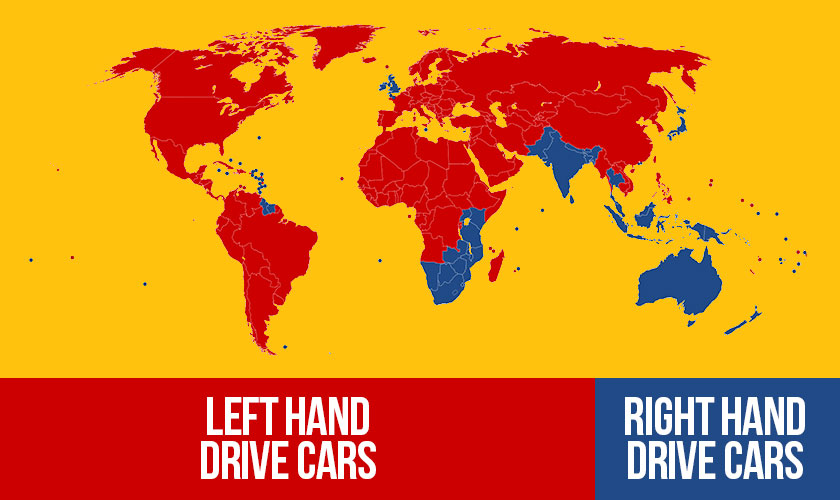Why are there Left and Right Hand Drive Cars?
In our diverse world, 65% navigate roads with left-hand drive (LHD) cars, leaving the remaining 35% steering right-hand drive (RHD) vehicles amidst left-hand traffic (LHT). This historical dichotomy traces back to the seventeenth century when commuters, likely wielding weapons, rode on the left side. Wagons then continued this tradition, allowing riders to use their right hand for the whip.

What is the Difference between L/RHT (Left or Right Hand Traffic) and L/RHD (Left or Right Hand Drive)?
Don’t be fooled by these two apparently synonymous terms, since the application of one of these terms reverses the other. I will explain these two terminologies in this paragraph. Right or Left Hand Traffic (R/LHT) just means the side where traffic flows, as far as Pakistan is concerned, we are a Left Hand Traffic (LHT) country. However, the Right or Left Hand Drive (R/LHD) represent the side in which the driver sits, which in the case of our country is Right Hand. As you might have noticed, the side of the driver seat defines an RHD/LHD car which is the opposite of the direction the traffic flows in the country.
The Traffic Shift
The French Revolution sparked a traffic upheaval in the eighteenth century. Initially, rulers in France traveled left, compelling the public to walk on the right. Amidst the revolution, even aristocrats switched to the right side to evade protests and the guillotine. Napoleon Bonaparte later standardized the “common right,” associating France with driving on the right (RHT) and utilizing left-hand drive (LHD) vehicles.
Global Influence
French-controlled territories and German driving conventions furthered the dominance of left-hand drive (LHD) and right-hand traffic (RHT) in Africa and the Middle East. France’s influence also shaped Arab nations in the Middle East to adopt right-hand traffic (RHT).
The Left Hand Legacy
During British rule, territories like Australia, India, and Pakistan embraced left-hand traffic (LHT) and right-hand drive (RHD) cars. The 1835 Highway Act cemented this norm, making it a legal obligation in Britain and its colonies.
Napoleon, during his rule, kept on implementing the Right Hand Convention on the acquired countries while the opponents of France continued driving on the left, with Britain leading the pack. Initially, England, Wales, Scotland, and Ireland were kept to the left side of the road (LHT) due to an ongoing custom. However, driving to the left was incorporated into the law in Britain and all of her colonies in 1835 through The Highway Act, leading to right-hand drive (RHD) cars.
In light of this, the territories acquired by the British assumed the keep left rule, which is why today, Australia, India, and Pakistan drive on the left (LHT) and use right-hand drive (RHD) cars.
Exceptions to the Rule
Several countries stand as exceptions, never part of the British Empire yet practicing left-hand traffic (LHT) with right-hand drive (RHD) cars. Bhutan, Indonesia, East Timor, Nepal, Suriname, Mozambique, Thailand, and Japan navigate the left side of the road despite their unique histories.
In Africa, colonial legacies shaped traffic directions, with British and Portuguese colonies adhering to Left Hand Traffic (LHT), while those under French and German rule drove on the right (RHT). Post-independence, some retained these conventions, while others aligned with neighboring countries.
Which side of the road do you prefer? Tell us in the comments below!